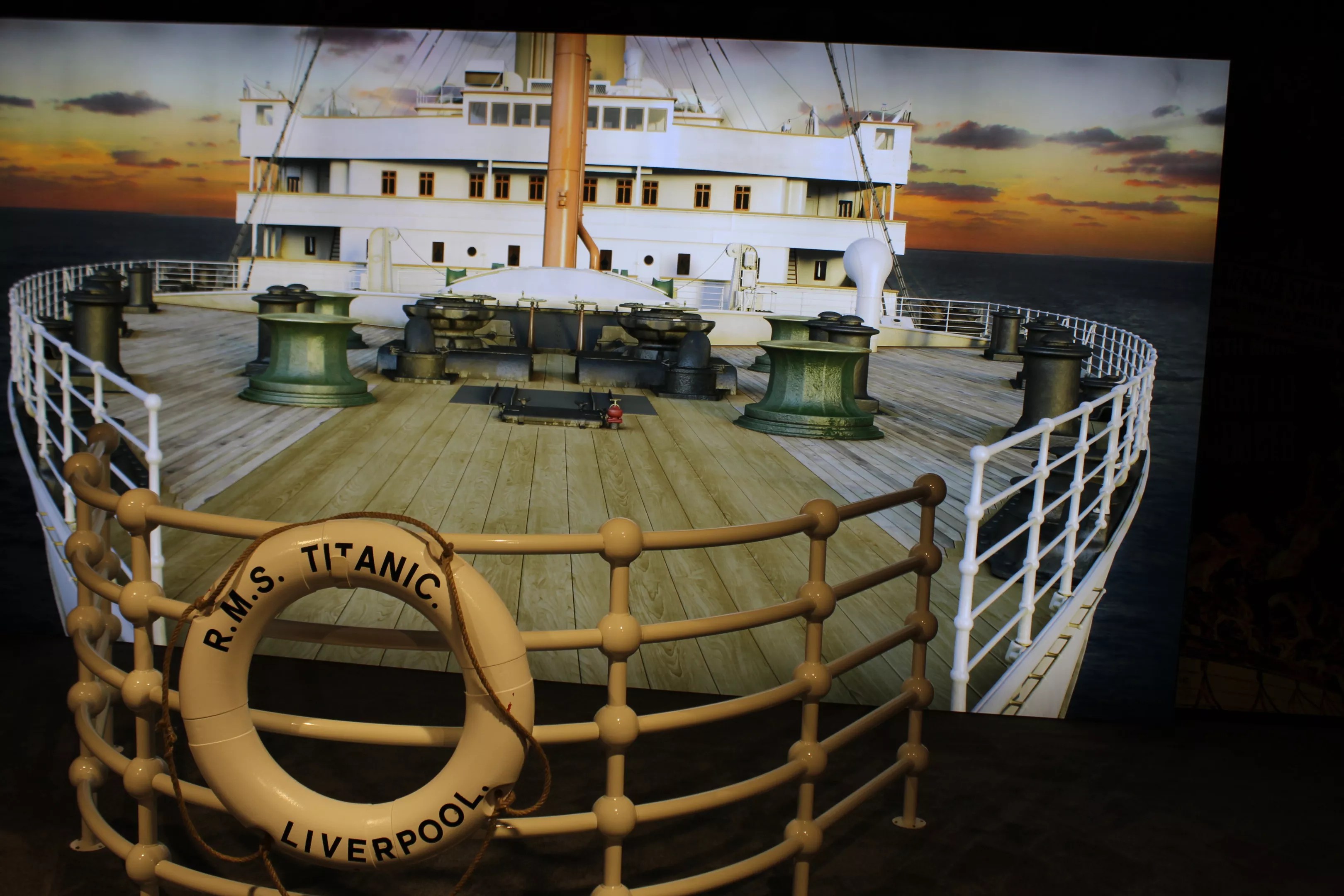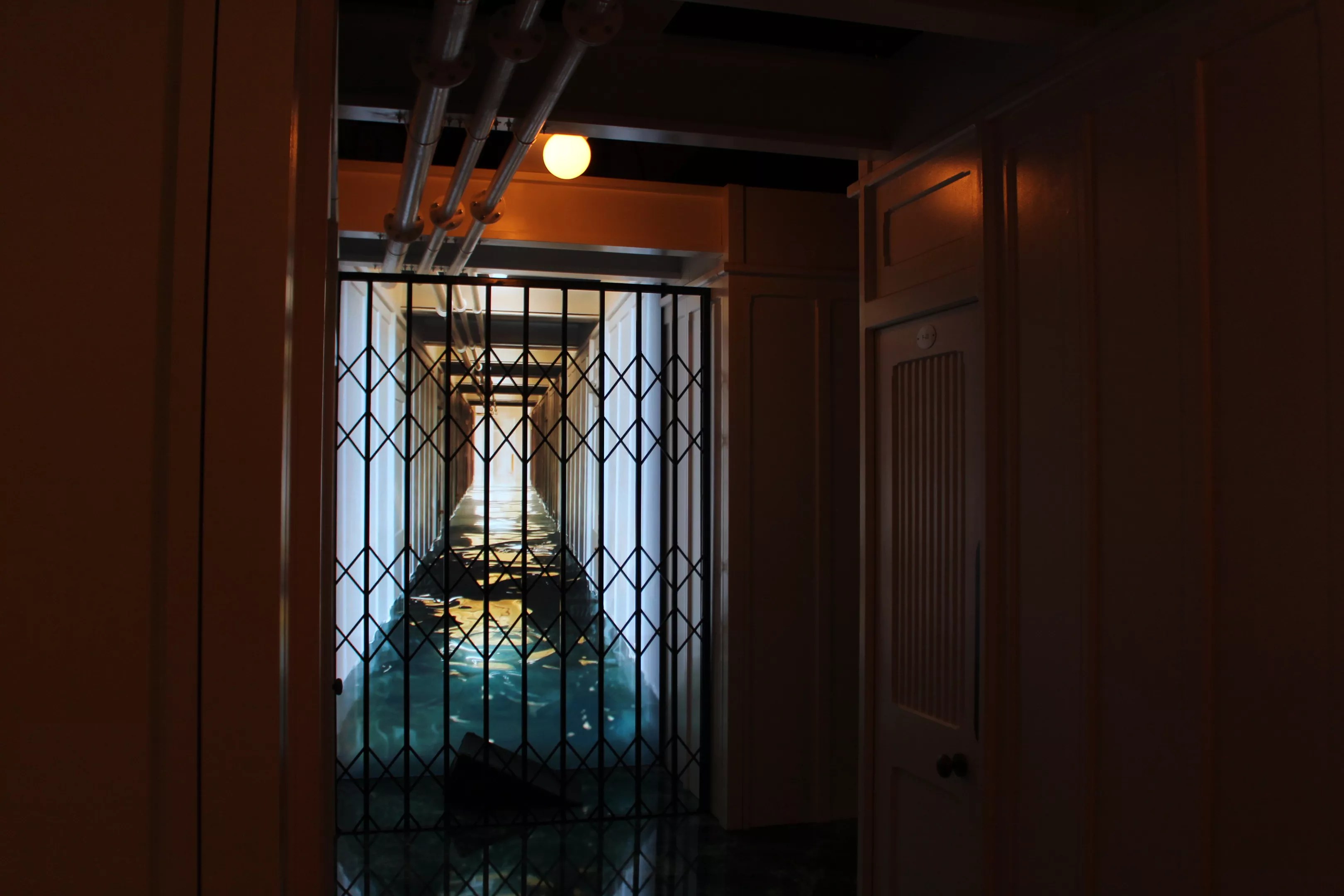
Kristen Fiore

Audio By Carbonatix
At the age of ten, I sat down with two friends and penned a script about three sisters who boarded the Titanic. One of my friends had recently seen the 1997 Titanic movie and that was the aesthetic she pictured for our play, so she wrote a tragic love story into the plot for her character.
I, on the other hand, had no interest in the movie – or Leonardo DiCaprio, for that matter. It was the tragedy itself that drew me in. I was one of those kids who checked out as many library books on the infamous maritime disaster as I could, scanning them obsessively for any details about what it was like to be on a huge sinking ship in the middle of the ocean.

My “headshot” on the lovely poster my friend made (likely in MS Paint) for our Titanic plays.
Ivy Kuhrman
My friend might have been inspired to participate in our childish dramaturgy by her fictional love interest, but I had the most fun orchestrating the wreck and our characters’ dramatic dash to the lifeboats. We would go on to write three more Titanic plays, making extra people out of balloons and pre-recording lines on a tape recorder when there weren’t enough actors to play the parts, and then forcing our bemused parents to watch us act out our productions.
Will you step up to support Westword this year?
At Westword, we’re small and scrappy — and we make the most of every dollar from our supporters. Right now, we’re $21,000 away from reaching our December 31 goal of $50,000. If you’ve ever learned something new, stayed informed, or felt more connected because of Westword, now’s the time to give back.
Maybe writing four plays inspired by the Titanic as a child was an original experience, but being obsessed with the Titanic is not. John Zaller, executive producer of Exhibition Hub, which is now presenting Titanic: An Immersive Voyage, the much-anticipated and latest installment in Denver’s immersive experiences, told me last month that he hoped the exhibit would make people consider why they are fascinated by the Titanic.
For me, it wasn’t that hard to figure out. I’ve always been filled with existential dread (yes, even at ten), which has led to a morbid curiosity about death, and there is a whole lot of that associated with the Titanic. Particularly after it collided with an iceberg late on April 14, 1912, four days into its journey, and sank without enough lifeboats to save everybody, killing more than 1,500 people.
I’ve also had a lifelong recurring dream about being on a sinking boat and drowning. During the summer of 2019, I had the dream every night for about two months straight, waking up in terror at dawn, followed by an exasperated feeling of this again? The dreams were extremely vivid and always of a different ship, always about a different situation and sometimes from an out-of-body perspective, but no matter what, they ended with the ship sinking and me drowning. Do me a favor and don’t try to psychoanalyze that.
It got to the point that any time I realized I was on a boat in my dream, I tried to wake myself up before the inevitable. So I was a little afraid that checking out the Titanic: An Immersive Voyage media preview on May 6 would feel like entering one of my nightmares – but in real life.
Turns out it wasn’t that immersive. Ten-year-old me probably would’ve loved it. Adult me, who has died in dream-shipwrecks night after night, was unimpressed.
So bring your kids or satisfy your curiosity if you have your own interests in the Titanic, but don’t expect to feel like you’re actually onboard a sinking ship. I guess that makes sense. I mean, where do you draw the line in regards to an immersive experience that is about something that was actually horrifying?
Immersive Voyage draws that line with video displays and replicas of different areas on the ship, but the fact that the warehouse the exhibit was staged in was lined with gray carpet and smelled like a Home Depot kept me from getting too immersed. The experience starts with an homage to the movie (which I still don’t care about) and goes through a little history about the ship’s construction before taking you up a ramp to climb aboard.

Visitors can climb onto the deck and strike the iconic pose from the Titanic movie.
Kristen Fiore
Once inside the ship, you can explore renderings of the grand staircase, dining area and cabins before being taken into the cockpit where ice warnings are coming in. In the next room, you can stand on a small replica of the crow’s nest before a screen that simulates the Titanic’s collision with the iceberg. I don’t think it’s supposed to be funny, but it kind of is.
From there, you are taken into the boiler room, with animations and renderings of various areas of the ship being flooded, and then, finally, into a large, dark room where you can sit in a lifeboat and watch transcripts of the Titanic’s final frantic messages over an animation of the ship again hitting the iceberg, flooding and sinking. That was probably the most immersive part of the exhibit, and I stayed there and watched the Titanic sink about three times.
A final area gives visitors the option to pay $10 for a Virtual Reality experience that goes deep down into the Titanic’s wreck site (I did not try that; there was no one manning the VR station when I went for the preview). There are also a few rooms about the aftermath of the wreck and the resulting safety regulations and relief funds.

A simulation of a hallway flooding after the Titanic struck an iceberg.
Kristen Fiore
Immersive Voyage is peppered with artifacts (mostly replicas from the movie and pieces from the Titanic’s sister ships, which didn’t sink), large signs with information and touch screens where you can see more photos and designs from the ship, and read typo-riddled biographies of passengers who were onboard.
Maybe I was unimpressed with the artifacts because when I was in high school, I went to Las Vegas with my dad for a conference he attends each year for work, and there I got to view a huge exhibit of actual Titanic artifacts taken from the wreckage, including “The Big Piece,” a fifteen-ton chunk of the ship’s hull and the largest portion of the wreck ever recovered.
If you’re interested in Titanic artifacts, you might be better off going to the Molly Brown House Museum in Capitol Hill, where notable Titanic survivor Margaret Brown once lived. The museum has its own Titanic exhibit right now; See Justice Done explores Brown’s role in helping the immigrant and crew survivors after the wreck.
If nothing else, Immersive Voyage is informative. I learned some interesting things that I didn’t know before, like the baffling fact that the Titanic did not have binocular lookouts, and the crew wasn’t even able to access the binoculars that were onboard because they were locked in a cabinet and the key wasn’t on the ship. Also, as the Titanic was sinking and putting out SOS signals, the S.S. Californian was only twenty miles away but had its communication channels turned off, and despite the fact that members of the crew saw the rockets that the Titanic set off to call attention to its dire situation, the S.S. Californian didn’t take action (or even turn its communications back on?).
It was the real passengers who I thought about most during the exhibit – a photo of people waving cheerfully as the ship set off really struck me, and sitting in the lifeboat, I could almost get past the comical rendering of the ship sinking and meditate on the real lives lost and the lasting trauma that the passengers who survived must have endured. “As the Titanic disappeared into the dark waters, the final sounds they heard were the screams for help from those in the water,” a sign near the end of the exhibit reads. “Many survivors recalled those pleas for help, saying the sound never left them.”
What would they think of Titanic: An Immersive Voyage?
Titanic: An Immersive Voyage opens Wednesday, May 7, and runs through Sunday, July 6 at Exhibition Hub Art Center Denver, 3900 Elati Street; tickets range from $19-$26.